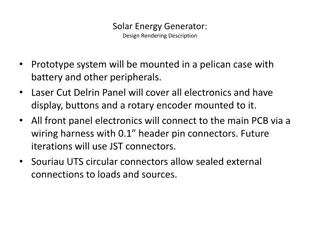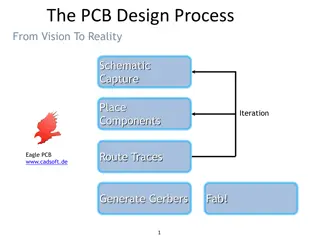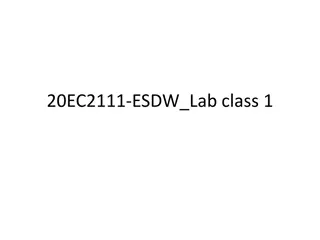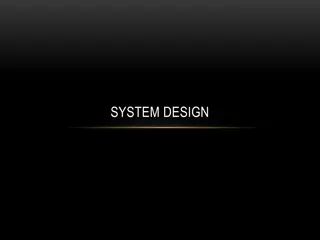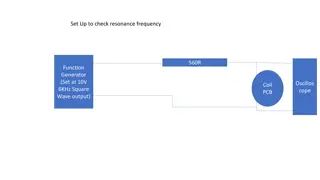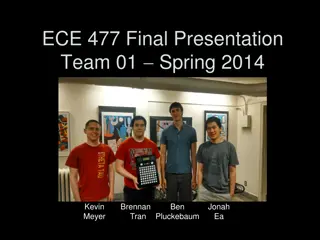Micromouse PCB Design Guide
This guide provides step-by-step instructions for designing a PCB for a micromouse. It covers components placement, sensor positioning, trace thickness, and trace style to optimize the performance of the micromouse. Proper positioning of components and sensors is crucial, along with considerations for traces width and thickness to ensure efficient power distribution and signal integrity. Follow this guide to create a well-designed PCB for your micromouse project.
Download Presentation

Please find below an Image/Link to download the presentation.
The content on the website is provided AS IS for your information and personal use only. It may not be sold, licensed, or shared on other websites without obtaining consent from the author. Download presentation by click this link. If you encounter any issues during the download, it is possible that the publisher has removed the file from their server.
E N D
Presentation Transcript
Lecture 8 Micromouse PCB design guide
Place library for encoder/mot or to (0,0) to make it symmetrical from left and right Draw a middle reference line
Use dimension layer to draw the outline of the mouse, make sure the length is not exceed 100mm to save cost
Draw the guide line for the wall and posts in order to determine the sensor point angles later
Place the components at proper position Place sensors at proper position, make sure they point to proper location Make sure the components won t be blocked by motor mount/encoder
Where should sensors point to? Side sensors point to somewhere a little to the front of the post, when the mouse is at the center of the cell Front sensors point outwards about 5-10 degrees, make so it won t point to the side of the wall when at 1.5 cells away
Settings No mask for via>12 mills Make 1 mill grid when drawing and parts placing
Traces MCU pins from LQFP package are 10-12 mill wide. Try maximum tracer width for power/analog signal related trace Thinner traces are OK for digital signal
Trace thickness Wider trace for high power intensive parts, ex. Vbat Power trace Thinner for signal traces Polygon may needed to give more area for power trace for thermo performance
Trace style Shorter the possible Less turn possible 45 degree turns good bad
Small via 12 mill via minimum Good for signal trace Better be masked
Large Via Larger via for power/thermo intensive trace/pad/polygon Should not be masked Drill shouldn t bee too big
Polygon First to the First: Don t make a single GND polygon for the entire PCB!!!!! Why? Because it will transfer heat to temperature sensitive components easily from some heat intensive parts You should place polygon selectively, only on those parts generate a lot of heat(5V LDO, motor driver) or the parts are sensitive with heat(MCU, analog device)
Sample 1 Motor driver, GND polygon, on both sides
Not make the polygon connected between 5V and MCU since MCU is temperature sensitive Sample 2
Distincted Ground MGND DGND AGND Don t mix them before they reach the negative terminal of battery AGND is temperature sensitive, make the trace avoid the hot area if possible











